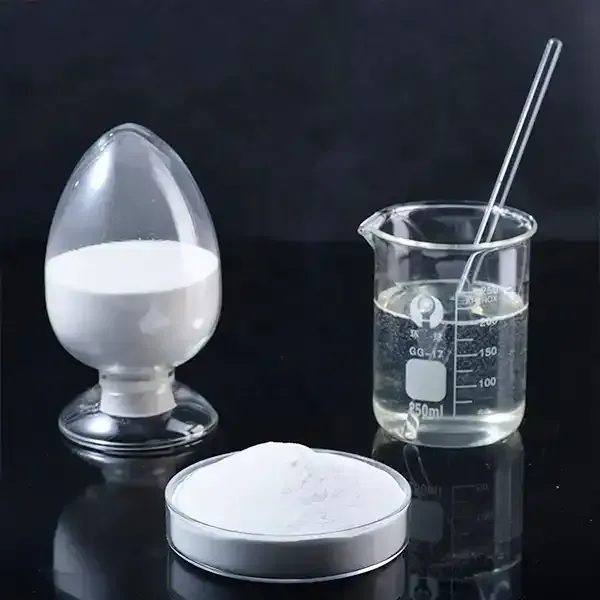Understanding Cellulose Ethers A Versatile Class of Polymer
Cellulose ethers are a diverse group of compounds derived from cellulose, which is the most abundant organic polymer found in nature. Cellulose is a biopolymer made up of glucose units linked by β-1,4-glycosidic bonds, forming long, linear chains. It is primarily sourced from plant cell walls, making it renewable and environmentally friendly. Cellulose ethers are produced by chemically modifying cellulose with various reagents, resulting in a wide range of derivatives that possess unique properties suitable for various applications.
Structure and Properties
The structure of cellulose ethers retains the fundamental backbone of cellulose while introducing new functional groups through etherification. The most common cellulose ethers include methylcellulose (MC), hydroxypropyl methylcellulose (HPMC), and carboxymethyl cellulose (CMC). Each of these ethers exhibits distinct characteristics due to the choice of substituent groups and their degree of substitution.
One of the primary advantages of cellulose ethers is their solubility in water, which can vary based on the type and degree of substitution. For instance, while methylcellulose is soluble in hot water and gels upon cooling, hydroxypropyl methylcellulose remains soluble at lower temperatures and does not gel, making it suitable for specific applications like food and pharmaceuticals. The ability to dissolve and form gels allows cellulose ethers to act as thickening agents, stabilizers, and emulsifiers, making them invaluable in many industries.
Applications
Cellulose ethers are widely utilized across various sectors, including food, pharmaceuticals, cosmetics, and construction. In the food industry, they act as food additives, improving the texture and stability of products such as sauces, ice creams, and baked goods. Their thickening and gelling properties enhance mouthfeel and prevent ingredient separation.
In the pharmaceutical realm, cellulose ethers serve as excipients, helping to control the release of active ingredients in drug formulations. Their gel-forming capabilities also make them ideal for sustained-release medications and as binders in tablet formulations. Additionally, cellulose ethers are commonly employed in topical creams and gels, providing a smooth, spreadable texture while enhancing the product's stability.
cellulose ethers

The cosmetic industry benefits from cellulose ethers as well, where they are used in lotions, shampoos, and other personal care products. They stabilize emulsions, improve viscosity, and provide a pleasant sensory experience when applied to the skin or hair. Their non-toxic nature aligns with the growing demand for safe and sustainable ingredients in cosmetic formulations.
Moreover, cellulose ethers play a crucial role in construction materials. Hydroxypropyl methylcellulose, for instance, is often added to mortars and plaster to improve workability and extend open time, allowing for better application and manipulation of these materials. This versatility highlights the importance of cellulose ethers in enhancing the performance of construction products.
Environmental Considerations
Given the increasing importance of sustainability, the natural origin and biodegradability of cellulose ethers contribute to their appeal as eco-friendly alternatives to synthetic polymers. The use of renewable resources aligns with the goals of reducing plastic waste and minimizing environmental impact. As the world increasingly seeks sustainable solutions, the cellulose ether market is poised for growth.
Future Directions
Research and development in cellulose ethers continue to evolve, exploring new derivatives and applications. Innovations in biosynthesis and green chemistry are likely to yield more efficient and environmentally friendly production methods. Furthermore, advancements in nanotechnology may lead to enhanced functionalities, such as improved mechanical properties and novel applications in fields like medicine and materials science.
Conclusion
Cellulose ethers represent a fascinating and versatile class of biodegradable polymers derived from one of nature's most abundant resources cellulose. Their wide-ranging applications in food, pharmaceuticals, cosmetics, and construction underscore their significance in modern industries. As sustainability becomes a guiding principle in product development, the role of cellulose ethers is set to expand, paving the way for innovations that align with ecological values and enhance everyday life. Their unique properties, coupled with a commitment to sustainable practices, ensure that cellulose ethers will remain vital components in various formulations and applications for years to come.
-
A Comprehensive Guide to Methyl Ethyl Hydroxyethyl Cellulose: Applications and Industry InsightsNewsNov.24,2025
-
Understanding Methyl 2 Hydroxyethyl Cellulose: Uses, Benefits & Industry InsightsNewsNov.24,2025
-
Hydroxyethyl Methyl Cellulose HEMC: Industrial Uses, Benefits & Future TrendsNewsNov.23,2025
-
HEMC Cellulose: Versatile & Sustainable Industrial Polymer | YoungcelNewsNov.23,2025
-
Methyl Hydroxyethyl Cellulose: Versatile Building Block for Industry & SustainabilityNewsNov.23,2025
-
CAS 9032 42 2: Understanding Polyvinyl Alcohol's Impact on Industry & SustainabilityNewsNov.22,2025




